5 ideas for creating effective content on your website
We talk a lot in our posts about the importance of content and inbound marketing, that being central to success and a how blog is the key for building a central repository of useful, insightful or entertaining content for your website visitors.
A blog really does have the potential to be 'the hub' in regards to content marketing. But what are the other options on your site, assuming that you have a blog section already and you feel that you're doing it well enough, what's next?
Well, a question in my inbox this morning from a Smart Insights Expert member got me thinking on this. Subject to the realities of your website, its flexibility, ability to scale and of course your access to people or budget resources, there's tonnes that you can now consider beyond a blog.
Our 5 ideas: Think sales first
Think of the buyer funnel, the persona types at different buyer stages. Start at the buyer stage and work up that funnel, this way you're making sure that you aren't leaking sales or leads before you layer on content and ideas that are, commercially at least, softer though no less important when you have a medium-term attitude to sales and income.
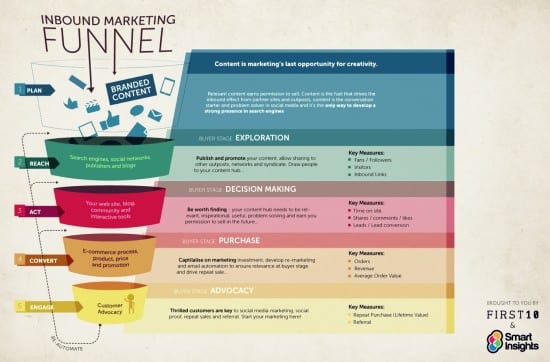
1. Product (or service) information
Are you doing the best job possible to ensure you're getting all the buyers that you can, with the traffic that you have? We'd suggest that the most important place to start is here and nobody internally is going to hate you for that. This point is particularly important for e-commerce sites - there's a huge difference on the quality of product information across e-commerce sites, are you using those content fields to maximum advantage? Optimise product pages to death, otherwise we're missing the point in the first place, right? Think about quality, unique content, keyword usage, product page titles, user content and feedback, practical ordering/returns information, page design and layout. What content is on there - any video of those products? What about great images that I can enlarge and zoom in from multiple angles? Make product realted pages as strong and visible as possible, scour your offices for the best information that you could add. Want inspiration? Check out ASOS below, doing an awesome job aside from the unhappy model! There's even video. Another great example here from Firebox though the page is a tad cluttered.
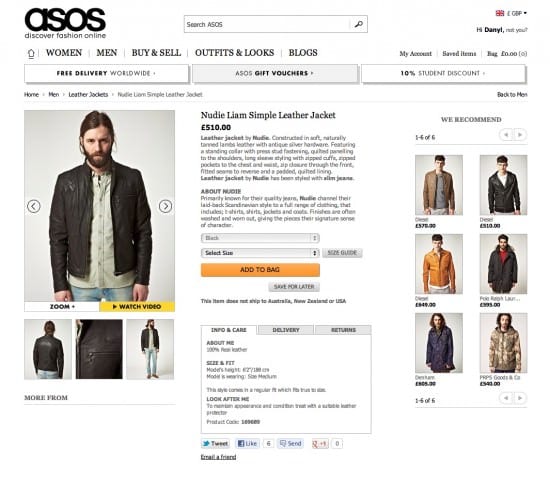
Product pages aren't just a B2C concern of course - if you're B2B there's even more reason, and less of an excuse, to get this right since you'll have way more product (or service) detail information, and way less products or services to improve. Here's a good example from the now Adobe-owned Omniture Site Catalyst software, possibly too much information though it is well sign-posted.
2. Case studies, ratings, reviews and testimonials
Another superb example here from Firebox.com (again aside from a little bit of a cluttered design) of not only a fantastic B2C product page but see how they allow user ratings, user videos and reviews of the videos, user photos, user comments via Facebook Comments API integration and even Reviews and FAQ's, more on that in the next point below.
B&Q's also provide an easy way to rate and make feedback immediate, visible and shareable. What testimonials are you using or could use? Also check out their "I did that" section where they're growing an increasing number of customer stories alongside their TV advertising campaign.
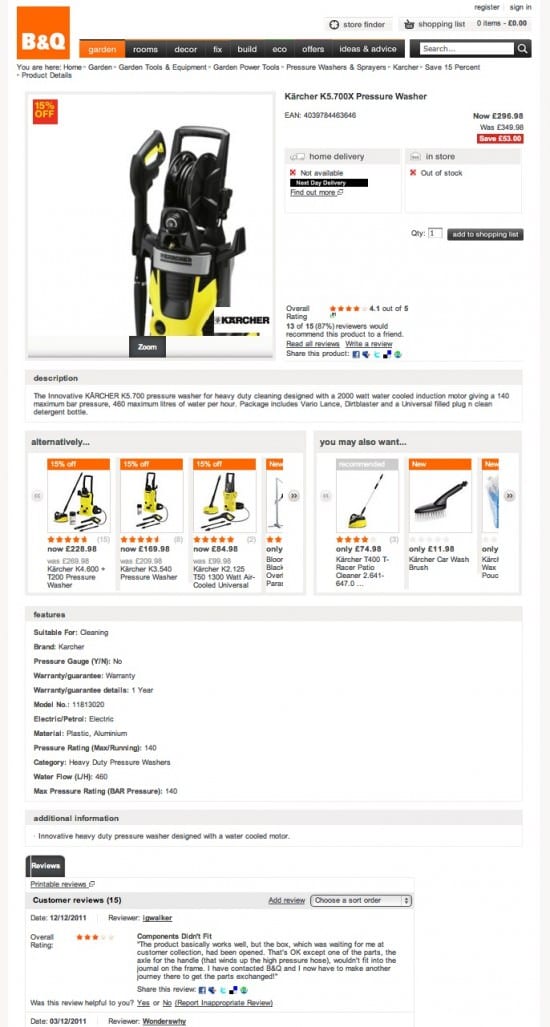 Again, this is most often easier for B2B applications - there are less customers and yet more are willing to promote or be promoted in return as formal case studies or testimonials, see software provider Eloqua with video case study / testimonials as well as their repository of rich text case studies organised by business sector or market.
Again, this is most often easier for B2B applications - there are less customers and yet more are willing to promote or be promoted in return as formal case studies or testimonials, see software provider Eloqua with video case study / testimonials as well as their repository of rich text case studies organised by business sector or market.
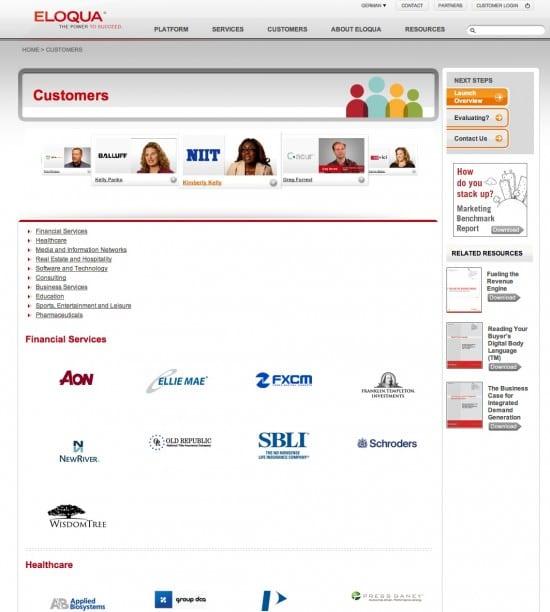
3. Social Q&A (an FAQ in the very least!)
Jay Baer posted on this a while ago. Consider a Q&A on your own site, where not only you (the marketer) get to kick-off with the traditional FAQ, but you can scale as a community tool with self generating content. This is easiest on B2B websites I'd suggest, since you're more likely going to already have a volume of people with an explicit question or problem about something, people who aren't sensitive either about registering with a work email address. At the high end see the example from Dell below, they have their "Social Q&A for IT Professionals" section embedded within their community and separate from the forums, nice! See one of the original Tech Social Q&A sites here too: Stackoverflow.
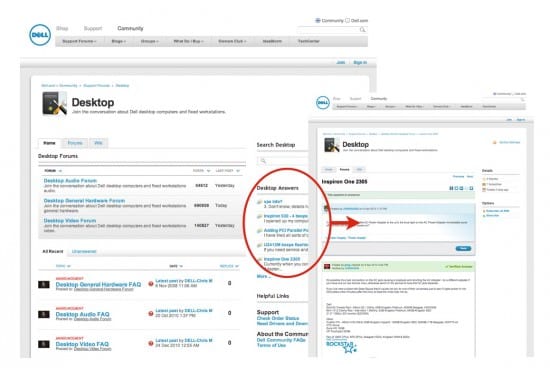
No excuses either for smaller B2C sites... as Jay Baer says, just start with an FAQ on a CMS-able page and ask people to click here if they have a question, i.e you make the FAQ social, see this B2C example on Tilda.com as the no excuses / do something version...
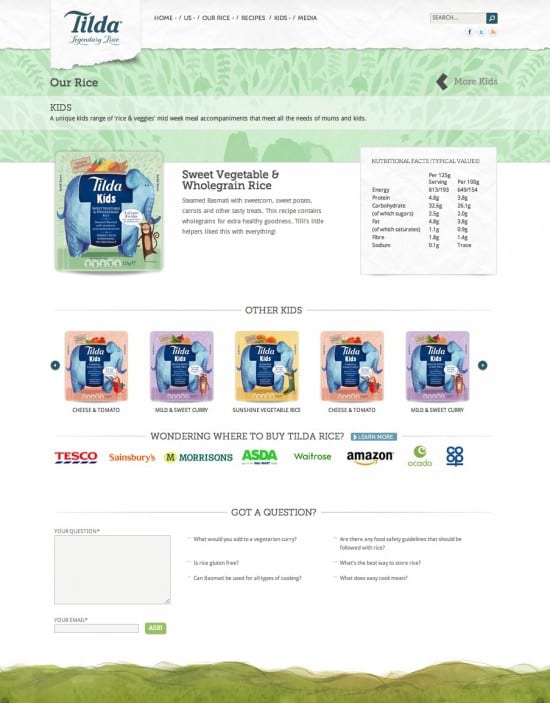
4. News, resources and downloads
Again - this area is way easier for B2B businesses, simply because they tend to have access to richer content and papers behind the scenes, and budget, plus there's more industry content to re-work, re-write and re-originate with your own brand in mind. Look again at the Adobe SiteCatalyst product page example and all the links to Adobe resources, and Eloqua the content maniacs (in a nice way). This is typically educational content, though can be information/entertainment too of course. For B2B think whitepapers, webinars and videos that all seek to support buyers earlier in the decision making process, you're helping to solve their problems. Sections like this on B2B sites become topic and/or product data centre's when done very well, companies like Hubspot are superb at it too.
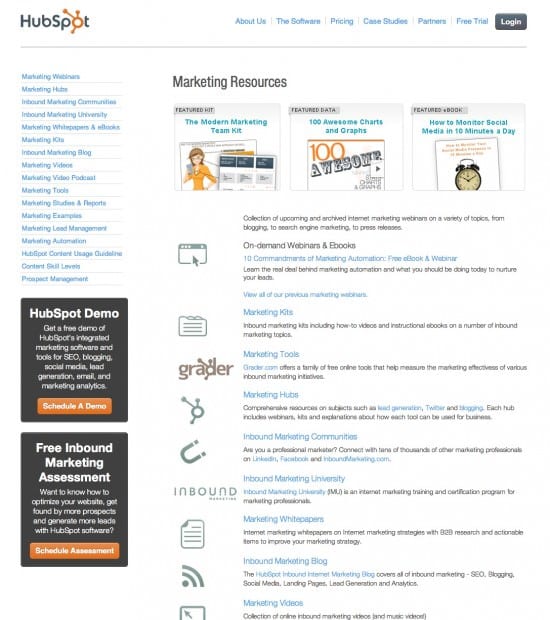
B2C will see more content being about product details and people using it, or talking about it. The example below is good since shows a charity angle on the idea of resources, giving people a lot of information to consider. You can see here how your blog, with other rich content on the site, can very quickly extend into something more akin to an 'online magazine' too, this example from Cancer Research UK and below for their main resources page...

You can incorporate the idea of a social media newsroom too, something that I've covered before, see Cancer Research's news page here...
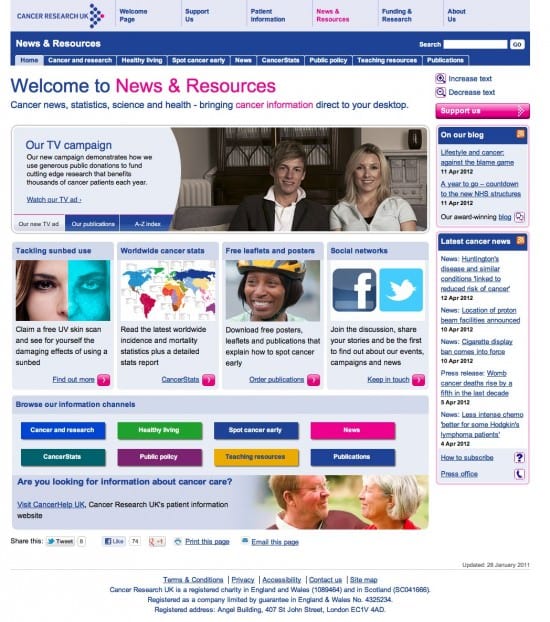
5. Rich media library content
People love video, it's a "now" content medium if ever there was one. You can think about Podcasts too of course but they're less popular and video is really paving the way (nice post here on that recently from a guest blogger Neil Davidson). If you're creating video, or you're interested in collating other peoples videos to share from your site (assuming that's relevant of course), then a media library is a great way to do that. I found that B&Q are doing a great job on their DIY.com site, they've seriously lifted their game and now have their massive collection of videos that they've cleverly chosen to host on YouTube, now officially this isn't on their site (as per the title of this blog!), but with the volume of videos they have it makes no sense to put it on their site, why? The cost to host and serve that much rich media would be a fortune, more importantly they're sharing arguable the most powerful content in the worlds second largest search engine where people are seeking entertainment, information and how-to's. Of course from YouTube you can use their API to pull selected videos back to your website and have the best of both worlds. Have a look for a best practise rich media page...
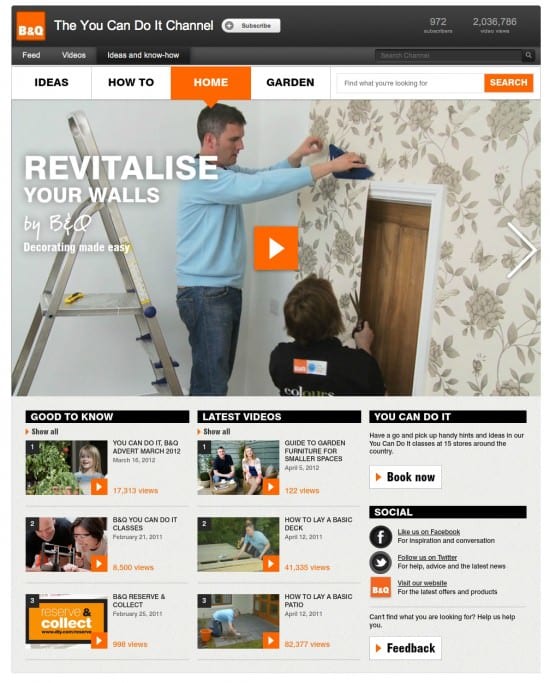
Hopefully this has been of some use, anything you agree, disagree with? Would you add more to this list of 5, let us know.





 Again, this is most often easier for B2B applications - there are less customers and yet more are willing to promote or be promoted in return as formal case studies or testimonials, see software provider Eloqua with video case study / testimonials as well as their repository of rich text case studies organised by business sector or market.
Again, this is most often easier for B2B applications - there are less customers and yet more are willing to promote or be promoted in return as formal case studies or testimonials, see software provider Eloqua with video case study / testimonials as well as their repository of rich text case studies organised by business sector or market.









